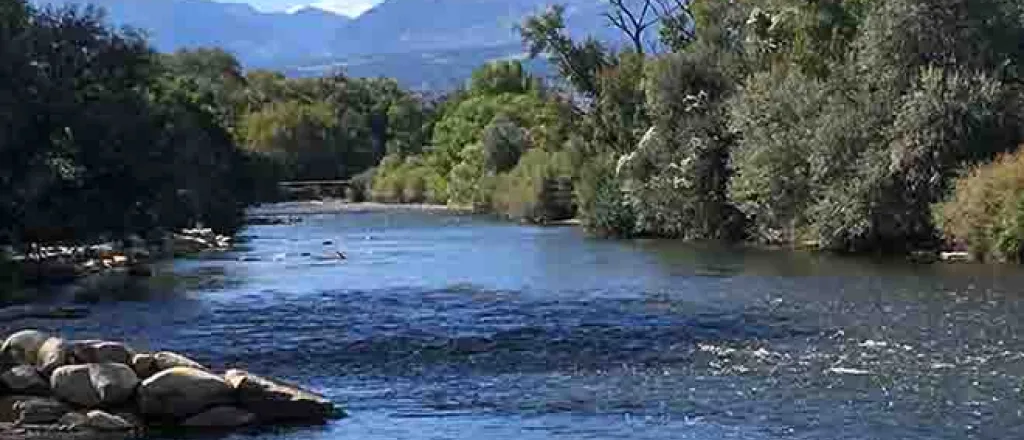
Arkansas River Report – November 2023
Abnormally dry conditions returned to southern and eastern parts of the Arkansas River basin in November, with the San Luis Valley experiencing severe drought, according to the Nov. 30 U.S. Drought Monitor report. By Dec. 3, snowpack had increased across the state. The National Weather Service three-month outlookprojects "near normal" temperatures through February in the Ark Basin and "leaning above" normal precipitation for Colorado as a whole.
Snowpack
In spite of recent snowfall in the upper basin, early season snowpack is trending below average with NRCS Snowpack Telemetry (SNOTEL) data showing basin-wide snowpack at 78% of median for snow-water equivalent (SWE). The highest reading is currently north of Pikes Peak at Glen Cove, where the SNOTEL station shows SWE at 220% of median. Additional snowpack readings are:
- 140% at Apishapa near the Spanish Peaks.
- 119% at Saint Elmo in western Chaffee County.
- 117% at Brumley near Independence Pass.
- 73% at Buckskin Joe in South Park.
- 71% at Fremont Pass north of Leadville.
- 41% at Hayden Pass in the Sangre de Cristo Range.

©
Winter Water Storage Program
The Winter Water Storage Program (WWSP) in the Arkansas River Basin runs from Nov. 15 to March 14 every year. The program was devised during the early planning stages of the Fryingpan-Arkansas Project and stores water that would otherwise be diverted by irrigators downstream from Pueblo Reservoir during the winter months. This stored water is then released during the following irrigation season.
The WWSP has been refined to arrive at "an equitable means of apportioning the stored water among the WWSP participants and avoiding injury to non-participants." Negotiations ultimately produced a consensus among participants and objectors, producing an initial decree approved by Water Court Judge Tracey in 1987. In 1990, Tracey entered an order making the decree final.
The participants in the WWSP primarily store their WWSP water in Pueblo Reservoir but also use Henry, Meredith, Holbrook, Dye, Adobe, Horse Creek, Great Plains and John Martin reservoirs. When space is limited, priority for storage of WWSP water in Pueblo Reservoir goes to entities that don't have access to off-channel reservoir storage. When active, the WWSP affects reservoir storage, river flows and calling water rights in the Arkansas Basin.
Reservoir Storage
Pueblo Reservoir, at 68.9% full, currently stores 222,617 acre-feet of water, above the 184,866 acre-feet recorded in storage at the end of November 2022. At 63.2% full, Turquoise Lake currently holds 81,795 acre-feet, compared to 84,452.2 acre-feet a year ago. Twin Lakes, 85.6% full, impounds 120,656 acre-feet of water, compared to 114,014 acre-feet a year ago. The U.S. Army Corps of Engineers reports water storage in John Martin Reservoir at 28,800 acre-feet, almost double the 15,921 acre-feet recorded at this time last year.
River Flows
With Fyingpan Arkansas Project water releases currently suspended and the WWSP in effect, Arkansas River flows have generally decreased in the Arkansas Basin. The Leadville gauge reports 97.6 cfs, and the gauge at Granite currently reads 84 cfs. River flow at Wellsville is 342 cfs, on target for the Voluntary Flow Management Program. The Cañon City gauge reads 375 cfs. The flow below Pueblo Reservoir, 75.1 cfs, reflects the WWSP. The gauge near Avondale currently reads 306 cfs, while the flow at Rocky Ford has dropped to 25 cfs. River flow below John Martin Reservoir has dropped to 0.6 cfs, and the flow near Lamar is at 27.6 cfs.
Calling Water Rights
Only seven water rights are currently calling for water in the Arkansas Basin, but seven authorized diversions are also calling for water under Division of Water Resources Division 2's interim water rights administration plan. The most senior calling right is the Model Ditch right with an 1862 priority date on the Purgatoire River. The 1864 Francisco-Daigre Mill right on the Cuchara River is next in priority, followed by the 1867 Baxter Pioneer and Coleman Ditch rights on the Huerfano River and Hardscrabble Creek, respectively. The 1868 Widderfield Combined right, the 1910 Fort Lyon Storage Canal and the Arkansas River Compact round out the list.
Authorized diversions include:
- Bison Park Reservoir (1911, East Fork West Beaver Creek).
- New Salida Ditch (1912, Arkansas River).
- Helena Ditch (1912, Arkansas River).
- Rock Creek Ditch (1912, Rock Creek).
- Colorado Gulch Ditch (1912, Colorado Gulch Creek).
- Joseph Dunn Ditch (1912, Lake Fork).
- Lake Creek Ditch (1912, Lake Fork)
















